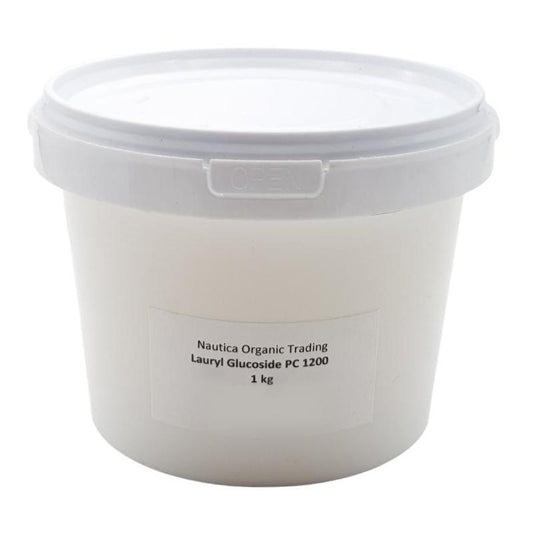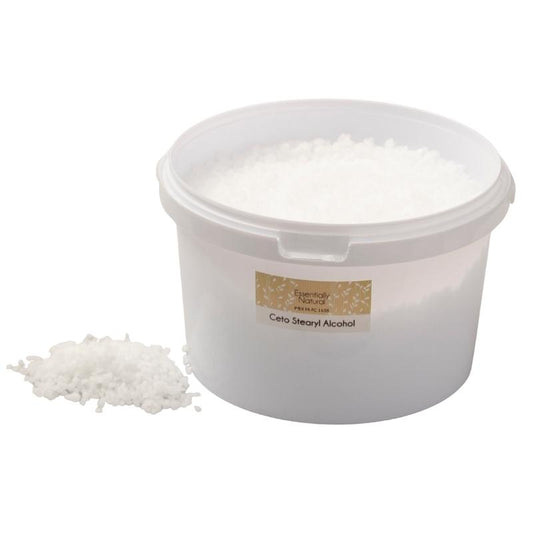
A Quick Beginner’s Guide to Surfactants
Juliette van der MeerThis week we are leading into a new blog series, on all the things you can make with surfactants. I've gone through a real phase of fascination with these foamy DIY friends, but thought it would be helpful to first explain what they are and how they work before diving into recipes.
Are Surfactants Toxic?
Surfactants may conjure up a chemically, unnatural image in one's mind, but there are quite a few that are in fact naturally derived and absolutely safe for use in natural products. Natural surfactants are great because they have a huge variety of applications, are biodegradable and environmentally safe, are easily pH adjustable to suit your needs and are gentle and non-irritant. The surfactants we will work with are derived from sustainably sourced plant sugars and enzymes and many are even ECOCERT approved, meaning you can use them to make organic products. Surfactants are used in everything from household cleaners, to shampoos, shower gels and baby washes.
To properly understand surfactants, here is a quick chemistry lesson:
What Are Surfactants?
'Surfactant' is shorthand for 'surface active agent', and as you may gather from this, they are active on the surface of the water-air/oil interface.
Much like soap, surfactants are made up of molecules that are amphiphilic, having both hydrophobic ('water-hating'; you can also think of them as lipophilic/'fat-loving') and hydrophilic ('water-loving' and 'fat-hating') ends. Remember that water and oil don't mix so you can think of them essentially as opposites; if one end of the molecule likes water, it simultaneously won't like fats/oils and vice versa.
How Do Surfactants Work?
Surfactant molecules position themselves with their hydrophobic ends pointing up and away from the water surface, while their hydrophilic end point into the water (you can picture them as sailboats on the ocean, with the hydrophobic sails in the air and the hydrophilic hull in the water). This breaks the surface tension on the water, making it easier for cleaning to happen, as there is no longer a distinction between the water and oil (ie. they can now mix and spread, aiding in cleaning and washing away).
Another thing to keep in mind is that all molecules have a charge, so surfactant molecules do too. Surfactants are classified as:
- Anionic (negative charge)
- Cationic (positive charge)
- Amphoteric (can be attracted to either positive or negative charge)
- Non-Ionic (no charge)
How Do I use Surfactants?
At Essentially Natural we sell only naturally derived, sulfate free products so this excludes most anionic surfactants such as sodium lauryl sulfate and sodium laureth sulfate which although lather and clean extremely well, are very harsh. We do stock one anionic liquid surfactant, sodium lauroyl sarcosinate, which is naturally derived.
Non-ionic surfactants work well with other surfactants so can be used in blends which are highly effective, but naturally derived.
Amphoteric surfactants are typically used with other surfactants to reduce harshness and support foam.
Here is a quick guide to the surfactants we stock:
Decyl glucoside- Liquid
- Non- ionic
- pH: 11.5-12.5
- Active matter: 51%
Decyl glucoside is ECOCERT approved, a rich and quick-forming foam, but short lasting with low viscosity.
- Liquid
- Non-ionic
- pH: 11.5-12.5
- Active matter: 55%
Coco glucoside is ECOCERT approved, a pearliser/opacifier and gas properties in between those of decyl and lauryl glucoside
- Viscous liquid to paste-like if crystallisation occurs
- Non-ionic
- pH: 12
- Active matter: 50%
Lauryl glucoside is slow forming, but the most stable foam. Suitable for higher viscosity products.
- Liquid
- Amphoteric
- pH: 5-8
- Active matter: 28 - 33%
Lauryl Betaine has antistatic and conditioning properties.
Sodium cocoyl isethionate (better known simply as SCI)
- Solid
- Anionic
- pH: 5-6.5
- Active matter: 87%
SCl has a rich lather with easy and complete rinse-off. Excellent tolerance of hard water and leaves no soap scum with it mostly used in shampoo and conditioner bars, and syndet bars.
Sodium C14-16 alpha olefin sulfonate (Hostapur OS liquid)
- Liquid
- Anionic
- pH: 6-8
- Active matter: 40%
Hostapur OS liquid has high foam and is versatile for use in household cleaners as well as personal care products.
- Liquid
- Anionic
- pH: 8 - 9.3
- Active matter: 29 - 31%
Sodium lauroyl sarcostinate is typically used as a secondary surfactant and in formulations of pH >6.
- Liquid
- Amphoteric
- pH: 5-6
- Active matter: 30%
How Do I Choose A Surfactant?
The glucosides are all quite similar to each other, the main molecular difference being the length of their carbon chains. They have slightly varying degrees of foam and longevity, but can generally be substituted for one another in a simple surfactant recipe.
- If you are making something specific such as a face wash, go for a quick-foaming, low viscosity surfactant such as decyl glucoside, supported with coco betaine.
- For shampoos, go for a thicker, more stable foamer such as lauryl glucoside, supported with a secondary surfactant and coco betaine.
Calculating ASM
Active surfactant matter or ASM is the amount of actives/concentration found in the surfactant. You want to know the ASM of your surfactants as they are diluted with water. If cocamidopropyl betaine for instance, has a 30% ASM, then it is made up of 30% actives and 70% water.
Products also call for a certain ASM depending on what their use is. If a DIY product calls for 18% ASM then you will need to calculate how much surfactant you need based on which surfactants you choose to use in your formulation.
These are the ASMs of typical products:
- Face wash/facial cleanser - 3-10% ASM depending on how gentle you want it to be
- Shampoo - 10-15% ASM (higher end for more oily type hair, lower for dry hair types)
- Body wash - 15-20% ASM
- Bubble bath - 20-25% ASM
The ASMs of our different surfactants are stated with each in the previous section. So now we need to work out how much of each to use. Let's have a gentle face wash of 6.5% ASM as an example:
We are going to choose Coco glucoside (ASM 55%), Decyl glucoside (ASM 51%), and Cocamidopropyl betaine (ASM 30%) as our surfactant blend. The coco glucoside will be our primary surfactant (the one we will use most of in the recipe), with decyl glucoside and coco betaine as secondary surfactants.
So, now we decide on the share of each to use, keeping in mind it must add to 6.5. Let's decide:
- Coco glucoside - 3
- Decyl glucoside - 2
- Cocamidopropyl betaine - 1.5
To calculate the mililitres of each to use, divide the quota of each by its ASM (or convert the percentage into decimal form, whichever is easiest for you):
- Coco glucoside: 3/55% = 5.45ml
- Decyl glucoside: 2/51% = 3.92ml (can round up to 4ml)
- Coco betaine: 1.5/30% = 5ml
And that is your surfactant recipe! Most of the time the exact amounts are provided in recipes, but ASMs are handy things to know how to calculate if you ever want to formulate your own products.












1 comment
OMG!!! Can I just say how grateful I am that you made this blog. I have been getting more j to making my own products that Are gentle since we suffer from sensitive skin. My son suffers from eczema and is experiencing hormonal acne. So I wanted to do something special for my family. Plus it’s more cost effective. Since we are in trying times. Finding ways to save money is a big one.
I will say I am still struggling on how you came up with the 6.5 ASM or if that was just an ex: you came up with on your own. I could use some assistance understanding it a bit better. I’m a visual learner so it’s alittle difficult for me to just read and understand. But thank you so much for creating this blog. I have seen very few people explain this the way you have. !!!!